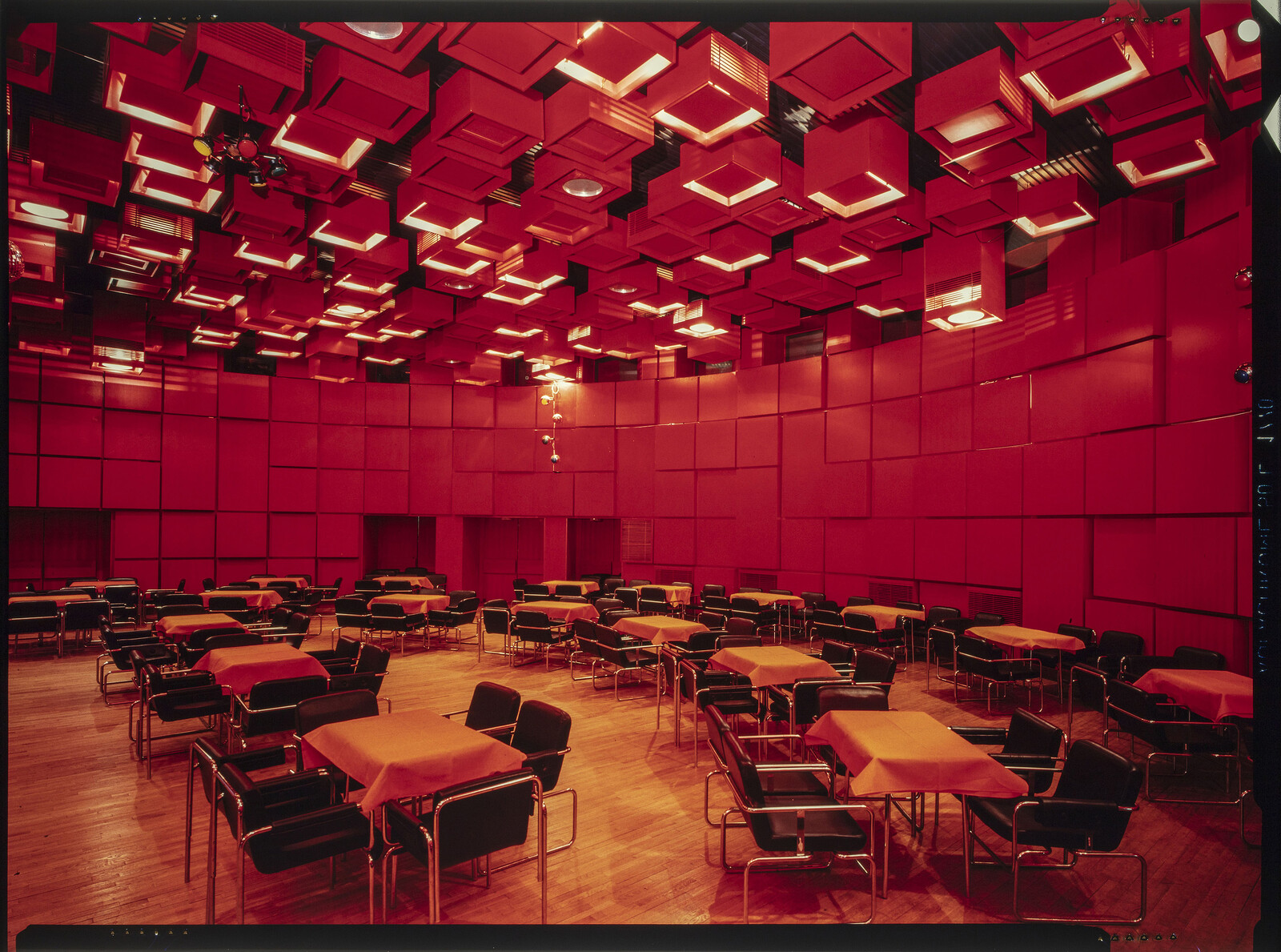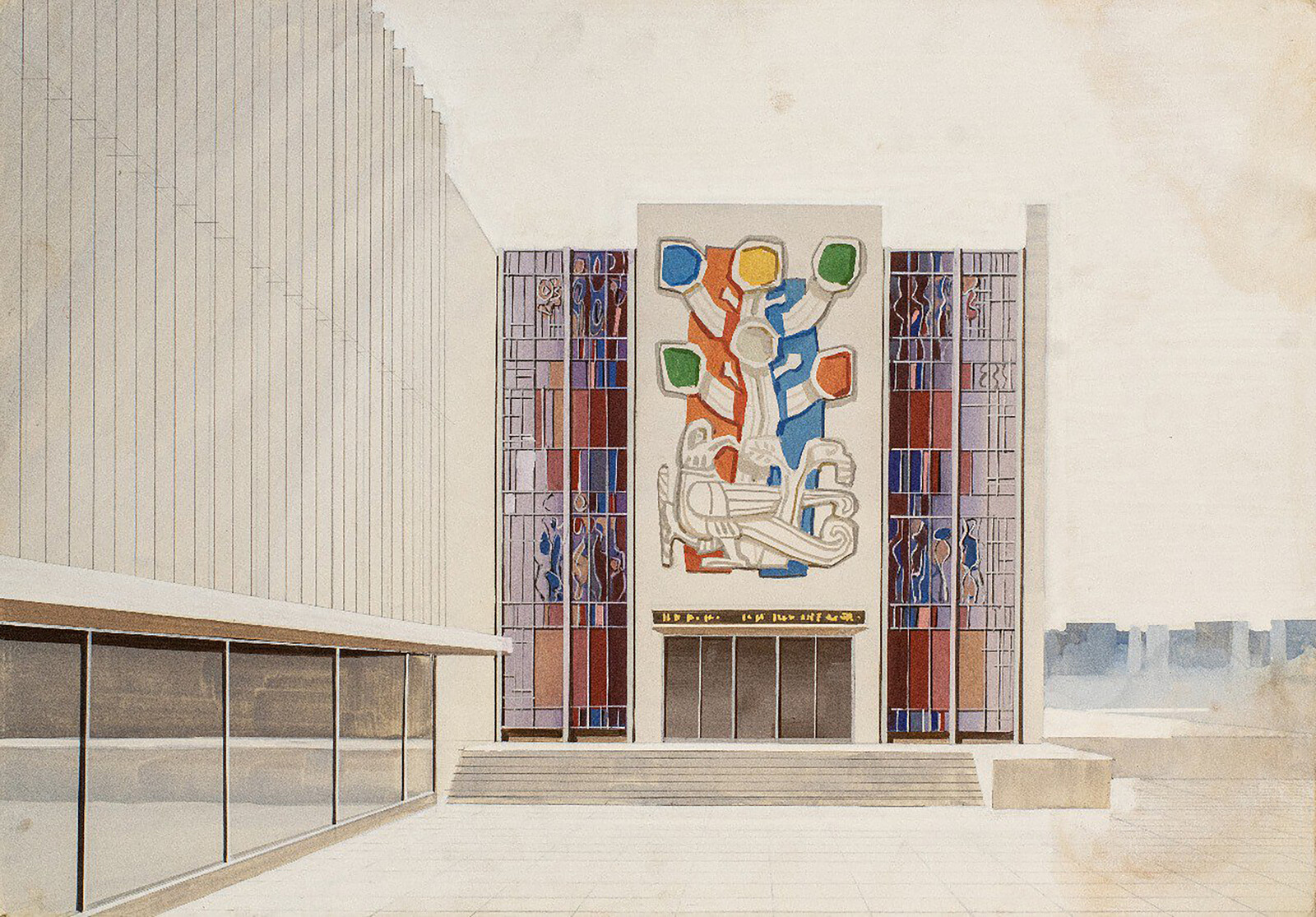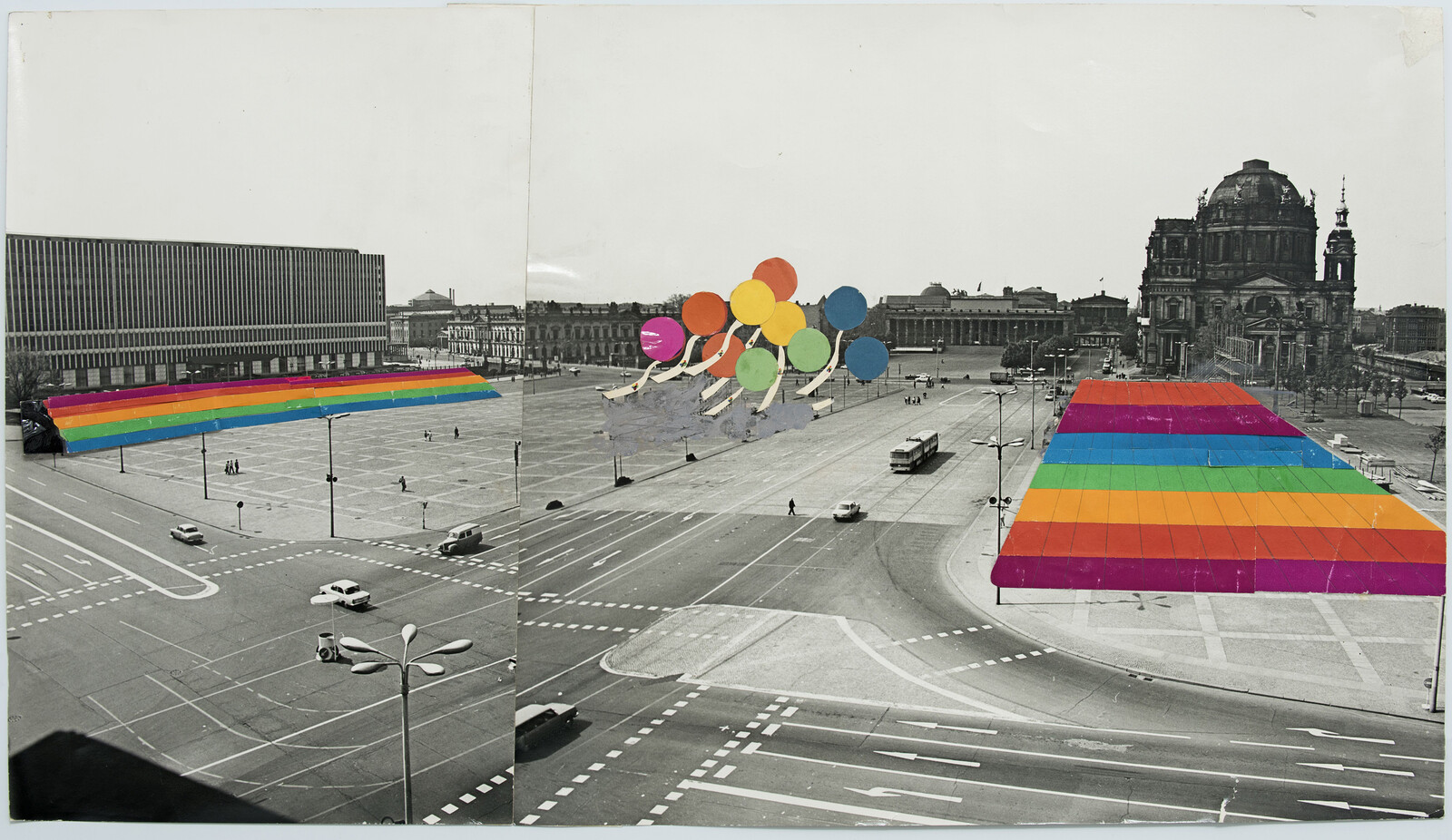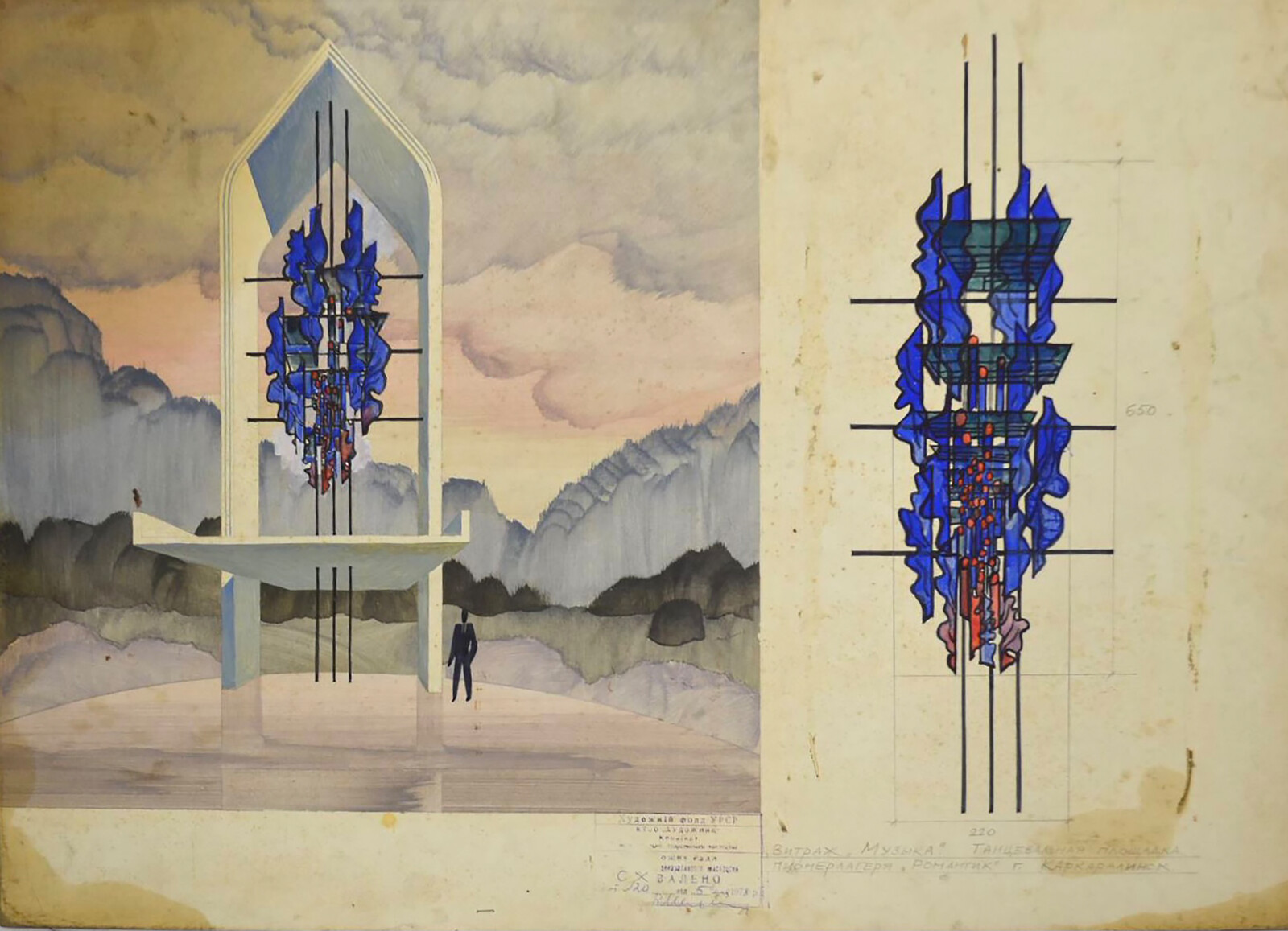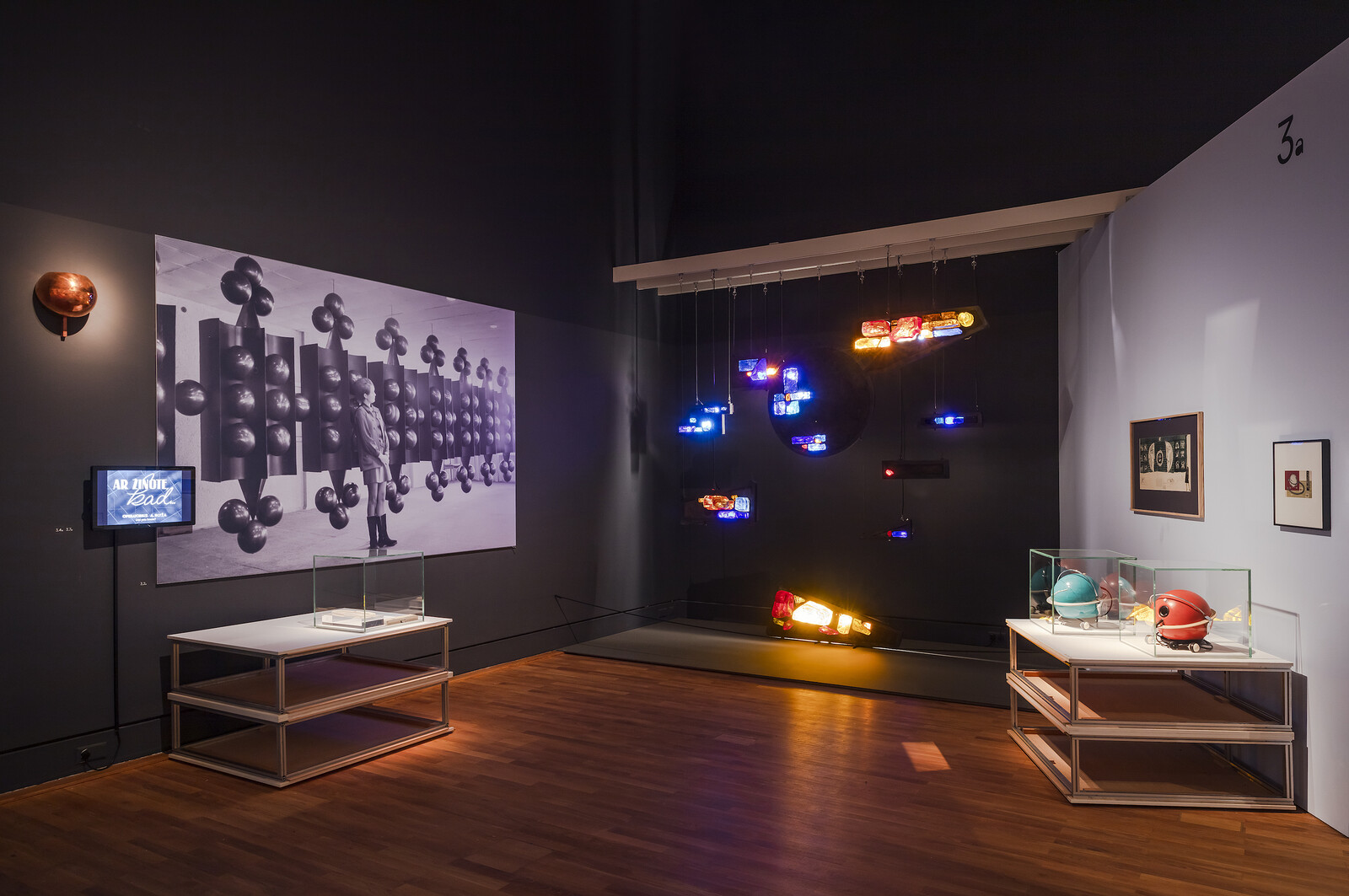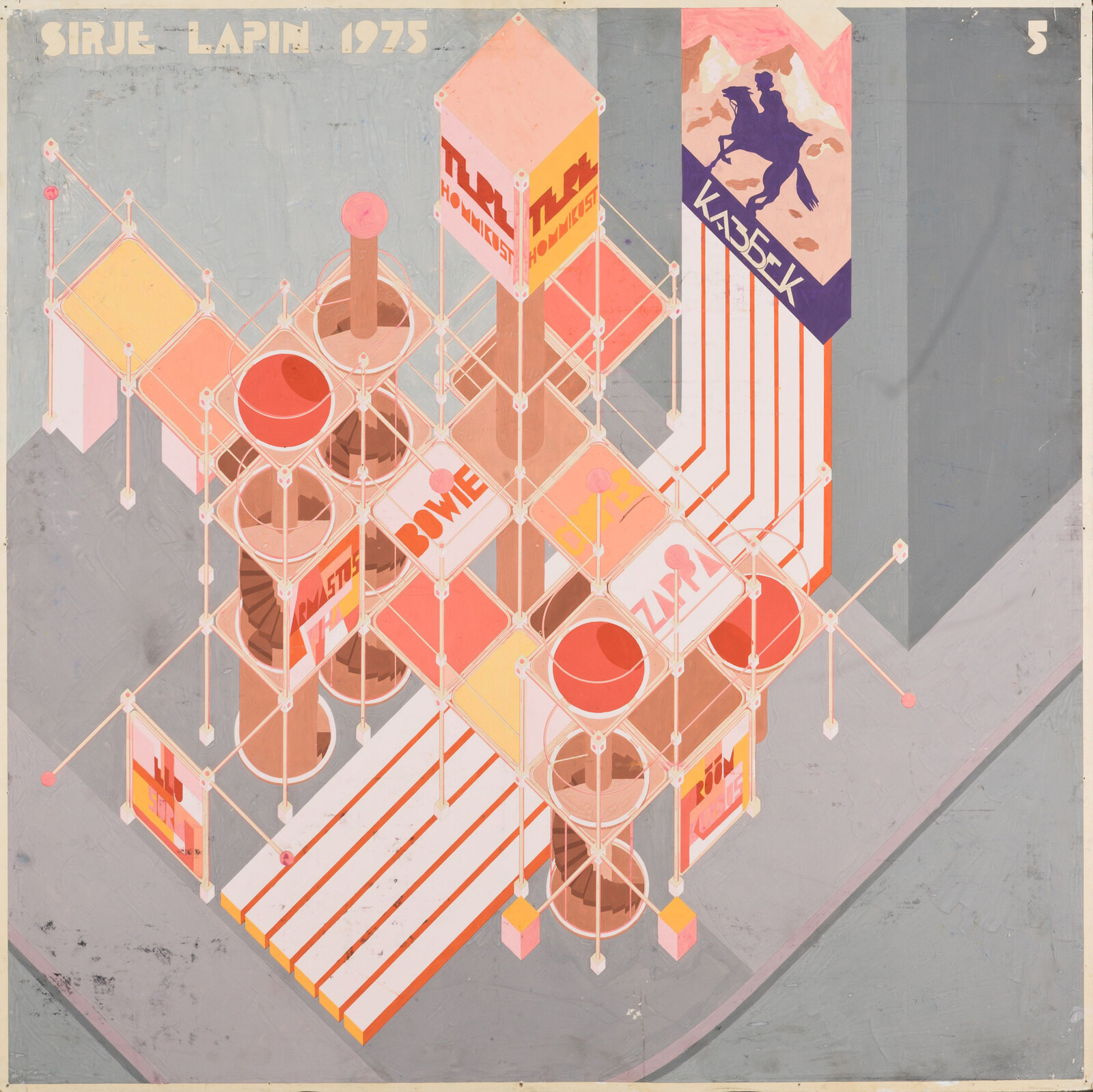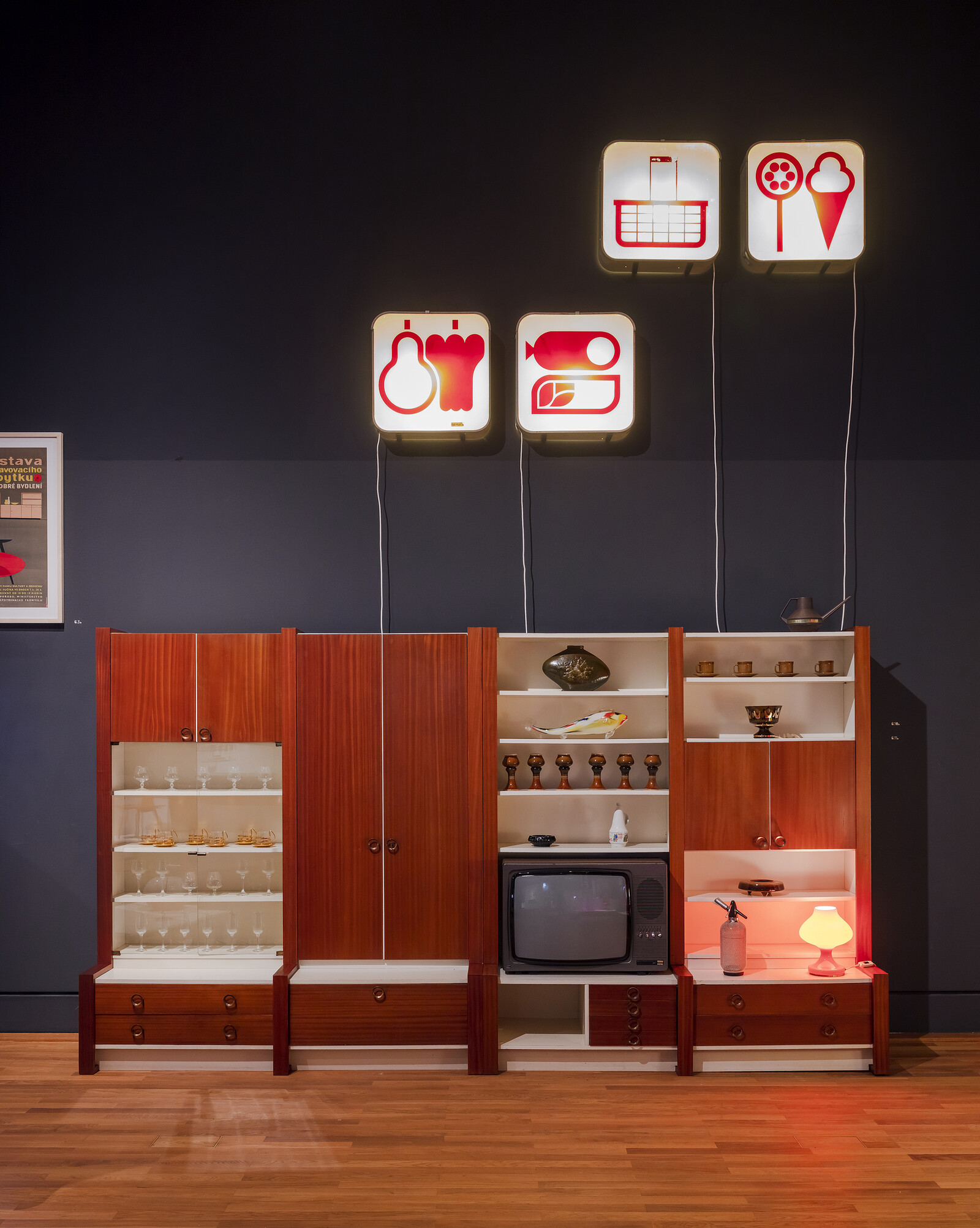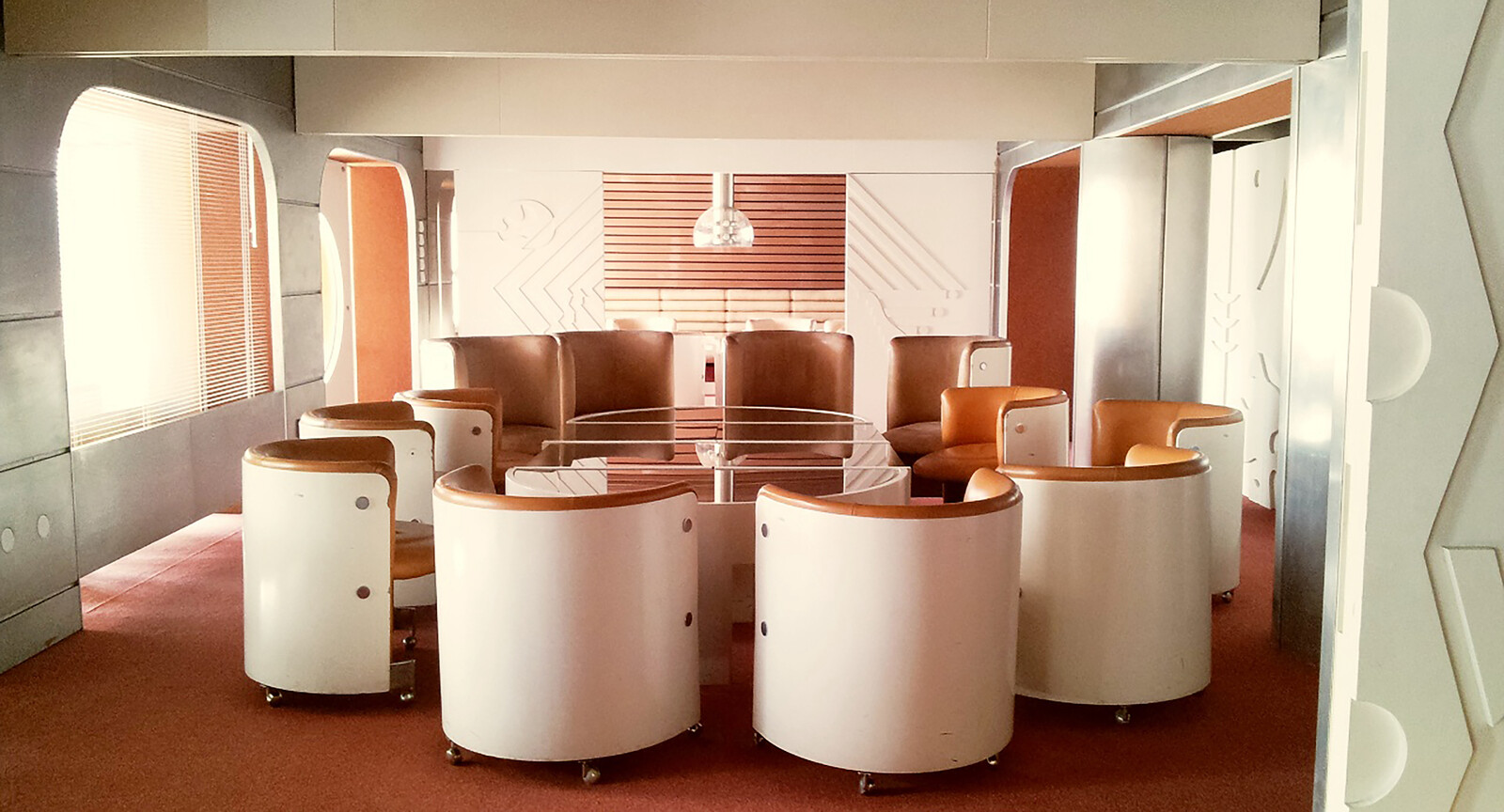To turn left upon entering the darkened exhibition hall of “Retrotopia: Design for Socialist Spaces” is to encounter a motley, utterly heterogeneous collection of objects ranging from the decorative to the domestic to the medical. Nestled against one wall is Cosmic Fantasy (1965): an experimental public sculpture work by Lithuanian artist Algimantas Stoškus consisting of luminescent slabs of stained glass arranged, Tetris-like, on a series of suspended geometrical forms. Adjacent to this is a mint condition Saturnas vacuum cleaner—the ultimate kitschy fusion of lofty, celestial aspirations and household banality—complete with orbiting moon wheels and ring. In a vitrine just opposite the Saturnas is the least recognizable item of the group: a tubular, vaguely biomorphic form that appears to be woven out of some sort of textile. This, it turns out, is one of the first vascular prostheses ever made: a specific model of artificial aorta manufactured in 1960s Lithuania using re-engineered German ribbon-weaving machines. Selected by Lithuanian curator Karolina Jakaitė, this eclectic assemblage of objects and artworks (along with contributions from other Lithuanian creators like sculptor Teodoras Kazimieras Valaitis and architect Vytautas Edmundas Čekanauskas) is one of eleven unique “capsules” that comprise the collaboratively curated “Retrotopia.” In its simultaneous diversity and specificity, it exemplifies the sweeping, at times challenging exhibition, which attempts to convey both the breadth of the utopian imagination and the granular, material histories of the objects and spaces created in its name.
“Retrotopia” consists of two components: a main exhibition and a supplementary archival presentation. In the main exhibition, visitors wander through eleven distinct capsules, each of which is grounded in a specific post-socialist geography (Ukraine, East Germany, Lithuania, Estonia, Slovakia, Czechoslovakia, Hungary, Poland, Moscow, Slovenia, and Croatia are all represented). Each capsule includes a mix of design artefacts, architectural representations, and artworks dating from the 1950s to the 1980s, and each addresses both public and private space. Thematically and materially, however, the capsules vary significantly. A section curated by Judit Horváth, Melinda Farkasdy, and Rita Komporday, for example, explores themes of spatial partition and social atomization in Hungarian domestic textiles, tracing the progressive appearance of grids, lines, and other formally divisive motifs in wall coverings produced throughout the 1960s. Anna Maga’s Poland-centered capsule, on the other hand, explores imagination and openness in the planning projects of architect Oskar Hansen (originator of the participatory, user-centered philosophy of “open form”) and the modular, multi-functional toys of Teresa Kruszewska. In the archival component, visitors are presented with a selection of smaller artifacts, photographs, and textual materials displayed according to four themes: “Institutions,” “Networking,” “Education,” and “Discourse.” The result is a convincing picture of the vast social and pedagogical substructure that gave shape to many of the projects showcased in the main exhibition, as well as of the myriad creative exchanges that took place both within the Bloc and between East and West.
One of the benefits of the expansive approach that “Retrotopia” takes is the challenge it mounts to monolithic perceptions of Cold War-era aesthetics, which too often appear in popular culture as universally streamlined, rational, and technologically oriented. This is not the case in the exhibition, which showcases multiple works—such as a series of late 1970s depictions of Ukrainian housing projects by architect Iosif Karakis—that complicate these prevailing stereotypes. Rendered in a chaotic mix of watercolor, gouache, pencil, and pastel and crowded with splashes of verdant foliage, Karakis’s works take up nearly an entire wall in the capsule selected by curator Alex Bykov. They offer a strikingly organic, almost impressionist re-interpretation of familiar prefab structures, their towering, rigid forms appearing smeared and softened as if having been soaked by rain.
Indeed, when the more typical examples of Cold War design do appear in “Retrotopia,” they are often presented in a way that encourages viewers to look beyond their technological sheen. This is the case with Slovakian curator Klára Prešnajderová’s treatment of the Presidential Lounge of the Bratislava Airport, whose white, modular furniture and shimmering stainless steel walls exemplify the sort of sleek, artificial quality we tend to associate most with the era. And yet, Prešnajderová’s capsule displays photographs of the Presidential Lounge and its furnishings alongside a curious partner: the rustic, mahogany and brass candlesticks of designer Viktor Holešták-Holubár. This pairing remains perplexing until the viewer consults the exhibition booklet, which reveals that both the Lounge furniture and the candlesticks were handcrafted in collaboration with the same design organization, the Center for Arts and Crafts in Bratislava.
Such acts of effortful decipherment are, for better or for worse, central to the “Retrotopia” experience, as the exhibition opts not to present materials with easily accessible titles or interpretive information. To illuminate the connections animating the objects of a given capsule (indeed, to simply identify any of the works in the exhibition), visitors must turn to their exhibition booklets and attempt to match the numerically labelled objects to their corresponding descriptions. Though overflowing with rigorous, detailed research (the English version clocks in at an impressive sixty-three pages), this booklet is a somewhat cumbersome hermeneutic tool, one which risks being eschewed altogether by more casual viewers. This, in turn, risks exacerbating the already-present split between the aesthetic qualities of the design objects on view and their social and political aspirations: a potential problem given the ideologically- and politically laden nature of all the featured projects.
Despite its shortcomings, however, the booklet is also able to communicate a level of historical specificity that would be impossible to achieve with more integrated modes of curatorial display. In this sense, it is crucial to the exhibition’s overall presentation of utopia(s) not as a hazy, abstract concept, but a concrete, historical-material phenomenon embedded within particular social, economic, and infrastructural conditions. The importance of this is touched on by Polish theorist Zygmunt Bauman, in the 2017 book from which the exhibition takes its name, when he cautions readers against the increasingly prevalent temptation to channel “public hopes of improvement in the uncertain ever-too-obviously untrustworthy future… in the vaguely remembered past.”1 Though “Retrotopia”, too, turns backwards in search of a future, the past in in which it seeks solace is richly, exhaustively, specific: at least for those committed to decoding it.
Zygmunt Bauman, Retrotopia (Cambridge: Polity Press, 2017), 4.
